
STUDIO ELEMENTS
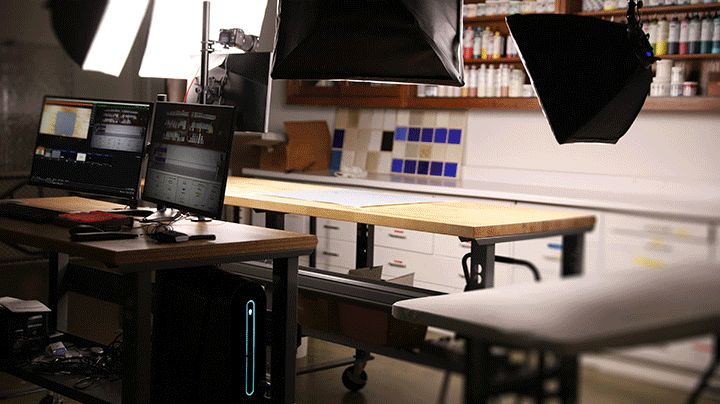
Did you know that in addition to GOLDEN acrylics, Golden Artist Colors also makes Williamsburg Oil Colors and QoR Watercolors?
We are committed to helping artists in every medium realize their creative vision and hope this special section of the Just Paint Experience helps you explore and find new ways to enhance your studio practice. Always feel free to give us a call or send an email if you have questions.
JUMP TO A SECTION BELOW:
GOLDEN Acrylic Colors
Titanium or Zinc White?
Titanium is often the “go-to” because of its opacity and brightness, but Zinc provides a subtlety and transparency that many artists prefer for mixing colors or painting blends and highlights.
Tap the images to learn more.
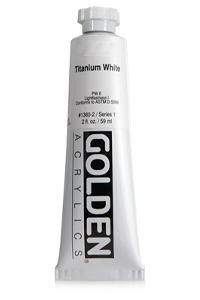
GOLDEN
Titanium White
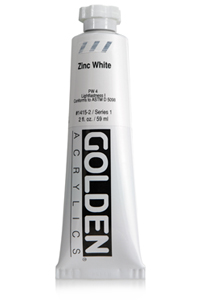
GOLDEN
Zinc White
Which Black?
Why three different blacks? The answer is one of character and working qualities. Carbon Black is bold, dark and fairly neutral, while Bone Black is warmer and a little more transparent. Mars Black comes somewhere between the two. Tap each color to learn more.
Watch our demo exploring GOLDEN blacks and whites below!
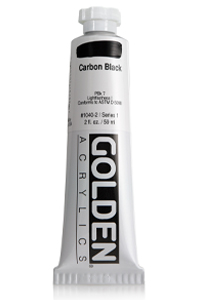
GOLDEN
Carbon Black
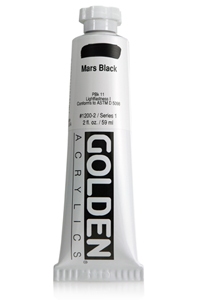
GOLDEN
Mars Black

GOLDEN
Bone Black
VIDEO: Exploring GOLDEN Blacks & Whites
Titanium White and Carbon Black are elemental in many artist’s studios. In this recording of a live demonstration and Q&A on August 4, 2021 we explore GOLDEN blacks and whites, how they might impact color, and why one might choose one over another.
VIDEO: OPEN Slow-Drying Acrylics Titanium White
Adding OPEN Slow-Drying Acrylics Titanium White to your fast-drying acrylic palette will increase the working time of paints, making it easier to create blends and soft gradients with color, or to simply slow down the painting process.
VIDEO SERIES: Color, Shade, Tint - Mineral & Modern Colors
In this 3-part video series, we create tints and shades of Mineral and Modern colors. Modern (synthetic) pigments tend to be stronger tinters while Mineral (natural) pigments may have a high chroma but a weaker tinting strength. The selected colors in this series are tinted with Titanium White (PW6) and Carbon Black (PBk7) – our most popular white and black.
Mineral & Modern Yellows
Yellows used in this demo: Modern: Benzimidazolone Yellow Light (PY175) Mineral: Cadmium Yellow Medium (PY35)
Mineral & Modern Reds
Reds used in this demo: Modern: Quinacridone Red (PV19) Mineral: Cadmium Red Medium (PR108)
Mineral & Modern Blues
Blues used in this demo: Modern: Phthalo Blue (Red Shade) (PB15:0) Mineral: Ultramarine Blue (PB29)
Click to view the full line of GOLDEN Heavy Body, OPEN, SoFlat, Fluid or High Flow colors.
GOLDEN Acrylic Mediums & Grounds
The versatility of acrylic colors and mediums can’t be overstated. By mixing the wide variety of colors, textures and effects available, artists can take their ideas in new directions. Below are just a few of the most versatile products we offer for studio artists.
Tap the images to learn more.
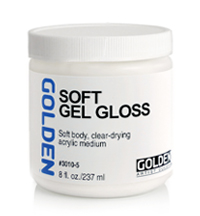
GOLDEN
Soft Gel Gloss
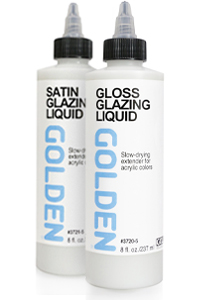
GOLDEN
Glazing Liquid
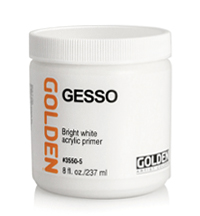
GOLDEN
Gesso
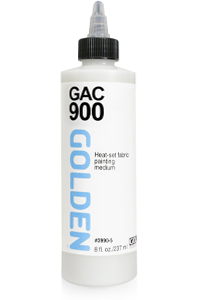
GOLDEN
GAC 900

GOLDEN
Light Molding Paste
VIDEO: Soft Gel Gloss
vs. Light Molding Paste
In this video we look at Soft Gel Gloss and Light Molding Paste. Stacy mixes each with Phthalo Green (Yellow Shade) (PG36) in Fluid Acrylics, shows the difference between the two products, the wet to dry shift of each, and the effects that different combinations and applications of paint and medium can help you achieve.
Additional Resources
Top 10 Uses for Soft Gel Gloss Read article >>
How to Create a Leveling Gesso Ground Read article >>
Painting Textiles and Wearables with GAC900 Watch Video >>
Click to view the full line of GOLDEN acrylic mediums, gels, pastes and grounds.
Learn more about GOLDEN Acrylics at goldenpaints.com.
Williamsburg Oils
Preserving the unique personality of each pigment is our priority with Williamsburg Oil Colors, even while we consistently study the working and drying properties of our paints and strive to improve their longevity and performance.
Navigating the differences between Williamsburg Whites
Williamsburg has seven whites to choose from, including four linseed oil and three safflower oil-based whites. For an in depth look at each of the colors, watch our video below on Williamsburg Whites, or read our Just Paint article, “The Subtle Differences of Williamsburg Whites“.
Tap the images to learn more.
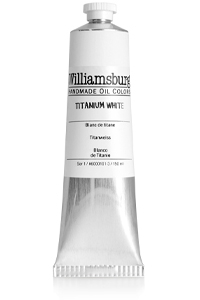
White
Williamsburg
Titanium White
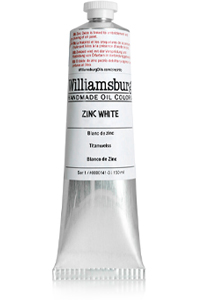
White
Williamsburg
Zinc White
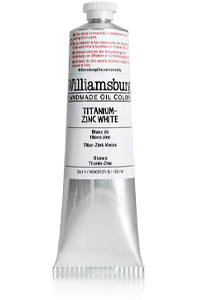
White
Williamsburg
Titanium - Zinc White
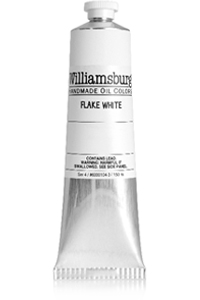
White
Williamsburg
Flake White
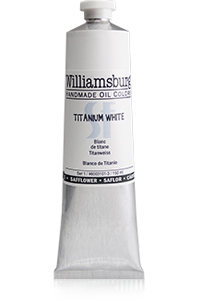
White
Williamsburg
SF Titanium White
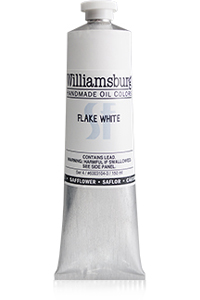
White
Williamsburg
SF Flake White
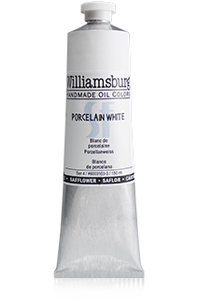
White
Williamsburg
SF Porcelain White
VIDEO: Williamsburg Whites
Titanium White is elemental in most studios, but when is it the right choice and when should another white be considered? In this recording of a live demonstration and Q&A with our Materials Specialist from August 18, 2021, we discuss the range and utility of the Williamsburg whites.
VIDEO SERIES: Color, Shade, Tint - Mineral & Modern Colors
In this 3-part video series, we create tints and shades of Mineral and Modern colors. Modern (synthetic) pigments tend to be stronger tinters while Mineral (natural) pigments may have a high chroma but a weaker tinting strength. The selected colors in this series are tinted with Titanium White (PW6) and Ivory Black (PBk9) – our most popular white and black.
Mineral & Modern Yellows
Yellows used in this demo: Modern: Permanent Lemon (PY3, PW6, PG18), Permanent Yellow Deep (PY65) Mineral: Bismuth Vanadate Yellow (PY184), Cadmium Yellow Medium (PY35)
Mineral & Modern Reds
Reds used in this demo: Modern: Quinacridone Red (PV19), Permanent Crimson (PR177), Pyrrole Red (PR254) Mineral: Cadmium Red Medium (PR108)
Mineral & Modern Blues
Blues used in this demo: Modern: Phthalo Blue (PB15:3) Mineral: Ultramarine Blue (PB29), Cerulean Blue (Genuine) (PB35), Cobalt Blue Deep (PB28)
Additional Resources
The Subtle Differences of Williamsburg Whites Read article >>
Williamsburg Safflower Colors Read article >>
Zinc Oxide: FAQ Read article >>
Learn more about Williamsburg Oils at williamsburgoils.com.
QoR Watercolor Grounds
You may think of watercolor as a traditional media done on watercolor paper – and it can be! – but have you considered using different watercolor grounds to create different textures? On paper, canvas or panels, QoR grounds can take watercolor painting in many new, surprising and exciting directions.
Tap the products below to see what they’re all about.
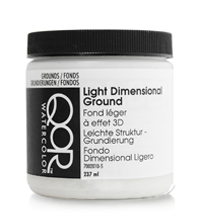
Ground
QoR Light Dimensional Ground

Ground
QoR Cold Press Ground
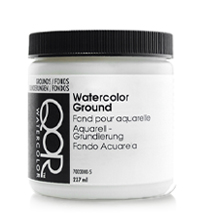
Ground
QoR Watercolor Ground
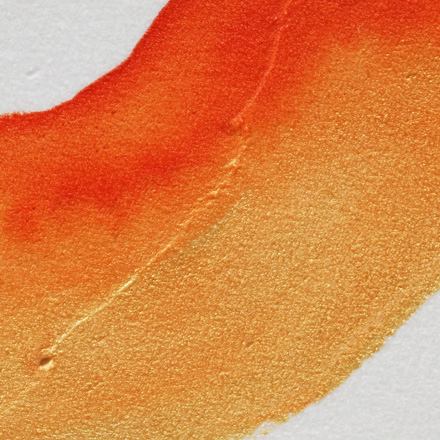
with QoR Watercolors
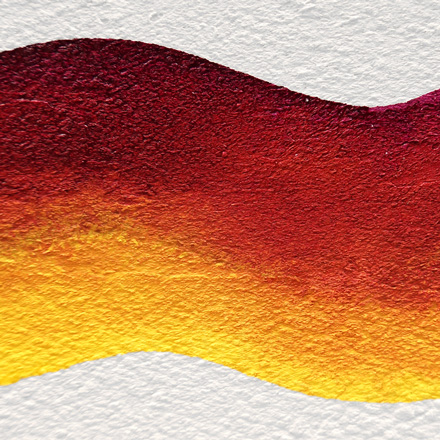
with QoR Watercolors
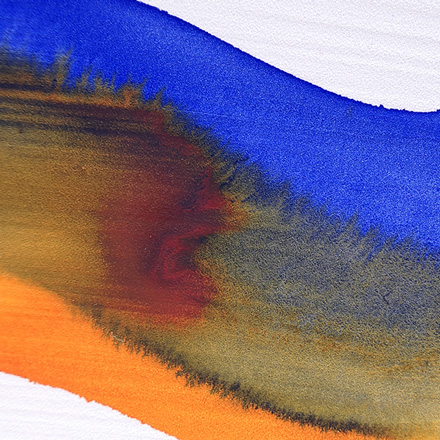
with QoR Watercolors
NEW VIDEO! Breaking Glass
Let’s talk about why you might want to varnish your watercolor, freeing it from a life behind glass. In this recording of a live demonstration from August 25, 2021, we discuss options, provide resources for further research, and demonstrate the dramatic effect this kind of protection can provide.
VIDEO SERIES: Painting on Grounds
In this 3-part video series, we demonstrate painting on each of our QoR Grounds – Watercolor Ground, Light Dimensional Ground and Cold Press Ground. Colors used in this series (all from our 24 Color Set): Burnt Umber (Natural) (Pbr7), Ultramarine Blue (PB29), Green Gold (PY129)
Painting on Watercolor Ground
This video shows how to create an absorbent surface that allows for soft edges and flowing wet-in-wet techniques with our Watercolor Ground. The ground dries to a lightfast, flexible surface that withstands repeated lifting and scrubbing.
Painting on Light Dimensional Ground
A white, lightweight paste that spreads like frosting, Light Dimensional Ground can be applied smooth and thinly, or built up to create ridges, peaks and other interesting textures, and can be used on a wide variety of surfaces. The extremely absorbent surface of Light Dimensional Ground allows washes to spread quickly, while accommodating fine lines and detail as well.
Painting on Cold Press Ground
Cold Press Ground dries to a rough surface and looks like handmade paper. The nooks and crannies catch the watercolor, and will allow for interesting lifting effects that you can’t get with traditional paper surfaces. If you apply with a dry palette knife, the texture will be similar to rough handmade paper. If you use a bit of water on your palette knife and run over the wet application, you can eliminate some of the roughness for a surface more like cold press paper.
Additional Resources
Purpose, Prep and Application of QoR Grounds Read article >>
QoR Mediums and Grounds Read article >>
Learn more about QoR Watercolors at QoRcolors.com.